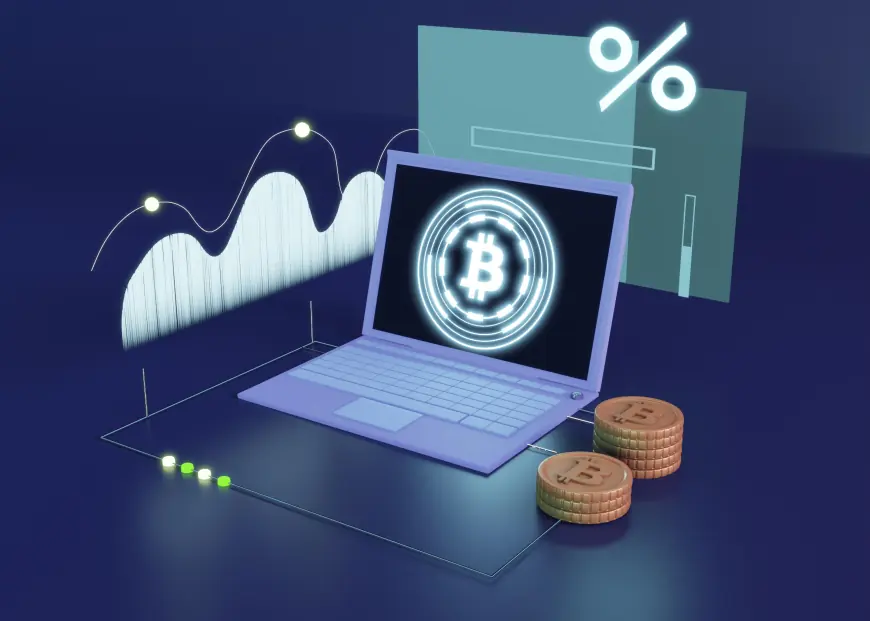Real-World Asset Tokenization: The Future of Digital Ownership
Real-world asset tokenization is changing how we invest in, trade, and own high-value assets. By using blockchain technology, smart contracts, and fractional ownership, it is making investment opportunities more accessible, transparent, and liquid.

The investment landscape is undergoing an unprecedented transformation due to blockchain technology and the tokenization of real-world assets. Traditional barriers that once made high-value assets, such as real estate, fine art, and commodities, inaccessible to many investors are now being dismantled.Real estate tokenization platform is reshaping the concept of ownership, increasing liquidity, and democratizing investment opportunities like never before.
But what exactly is real-world asset tokenization, and why is it seen as the future of digital ownership? In this blog, we will explore how tokenization works, its key benefits, and the industries that are being transformed by this revolutionary technology.
1. What is Real-World Asset Tokenization?
Real-world asset tokenization is the process of converting physical assets into digital tokens on a blockchain. These tokens represent fractional ownership of the asset, making it easier to trade, buy, or sell portions of high-value investments.
How It Works
- Asset Selection & Legal Structuring – The physical asset (real estate, gold, artwork, etc.) is identified and legally prepared for tokenization.
- Smart Contract Development – A blockchain-based smart contract defines ownership rights and automates transactions.
- Token Generation & Distribution – The asset is divided into digital tokens, each representing a fraction of ownership.
- Trading & Liquidity – Investors can buy, sell, or trade tokens on secondary markets, similar to traditional stocks.
- Automated Profits & Dividends – Depending on the asset type, token holders may earn rental income, dividends, or appreciation profits.
With tokenization, ownership is no longer limited to a single entity, and investment opportunities are made accessible to a broader audience.
2. Key Benefits of Real-World Asset Tokenization
1. Increased Liquidity
Traditional real estate and high-value asset investments are highly illiquid, meaning they take time to sell. Tokenization allows assets to be traded on blockchain platforms, providing instant liquidity to investors.
2. Fractional Ownership
Tokenization allows individuals to buy small fractions of an asset, lowering the financial barrier to entry. Instead of needing $500,000 to buy a property, investors can own a share for as little as $500.
3. Transparency & Security
Blockchain ensures full transparency in transactions, reducing fraud and eliminating intermediaries like brokers and banks. Smart contracts execute transactions securely and without human error.
4. Global Investment Opportunities
Investors can participate in international markets without dealing with complex regulations or currency exchanges. Tokenization enables borderless investment, making it easier for individuals worldwide to diversify their portfolios.
5. Cost Efficiency
By removing middlemen, asset tokenization significantly reduces transaction costs, making investment more affordable and efficient.
3. Industries Being Transformed by Asset Tokenization
1. Real Estate
Real estate tokenization is one of the biggest disruptors in the industry, making it possible for investors to buy and sell fractions of properties. This improves liquidity and makes real estate investment accessible to more people.
2. Precious Metals & Commodities
Gold, silver, and oil are now being digitally tokenized, allowing investors to own, trade, and store commodities without the complexities of physical ownership.
3. Art & Collectibles
Fine art and rare collectibles have traditionally been reserved for the ultra-wealthy. With tokenization, investors can own fractions of high-value paintings, sculptures, and NFTs, making the market more inclusive.
4. Infrastructure & Renewable Energy
Large-scale infrastructure and green energy projects are utilizing tokenization to raise funds from global investors, allowing people to contribute to solar farms, wind energy, and smart cities.
5. Private Equity & Business Shares
Companies can tokenize their equity, enabling investors to buy shares without traditional stock exchanges. This increases access to early-stage startups and private businesses.
4. Challenges & Future Outlook
Despite its promising advantages, real-world asset tokenization faces some challenges:
1. Regulatory Uncertainty
Many countries lack clear legal frameworks for tokenized assets, leading to potential legal risks. However, governments are increasingly working on blockchain regulations.
2. Market Adoption
Although tokenization is gaining traction, mass adoption is still in its early stages. More financial institutions and businesses need to adopt blockchain technology for it to become mainstream.
3. Security Concerns
While blockchain provides security, hacking threats and smart contract vulnerabilities remain a concern. Improved security measures and regulations will be crucial.
Future Outlook
With increasing acceptance and technological advancements, real-world asset tokenization is expected to become a multi-trillion-dollar industry in the next decade. More institutions, real estate firms, and investors are adopting tokenized assets, making it the future of investment and digital ownership.
Conclusion
Real-world asset tokenization is changing how we invest in, trade, and own high-value assets. By using blockchain technology, smart contracts, and fractional ownership, it is making investment opportunities more accessible, transparent, and liquid.
As regulatory frameworks evolve and technology advances, tokenization is likely to become the standard for asset ownership, paving the way for a new era of digital finance and decentralized investment.












